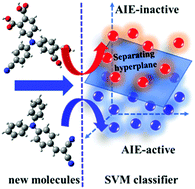*
Corresponding authors
a
School of Medicine, South China University of Technology, Guangzhou Higher Education Mega Center, Guangzhou 510006, China
b
Department of Radiology, Guangdong General Hospital/Guangdong Academy of Medical Sciences, Guangzhou, China
E-mail:
shui7515@126.com
c
CAS Key Laboratory of Molecular Imaging, Institute of Automation, Chinese Academy of Sciences, Beijing 100190, China
E-mail:
tian@ieee.org
d
University of Chinese Academy of Sciences, Beijing 100049, China
e
Department of Nuclear Medicine, Peking University First Hospital, Beijing 100034, China
f
State Key Laboratory of Luminescent Materials and Devices, South China University of Technology, Guangzhou 510640, China
g
Department of Diagnostic Imaging, National Cancer Center/Cancer Hospital, Chinese Academy of Medical Sciences and Peking Union Medical College, No. 17, Panjiayuan, Chaoyang District, Beijing 100021, China
h
Department of Chemistry, Hong Kong Branch of Chinese National Engineering Research Center for Tissue Restoration and Reconstruction, The Hong Kong University of Science and Technology, Clear Water Bay, Kowloon, China
E-mail:
tangbenz@ust.hk



 Please wait while we load your content...
Please wait while we load your content...